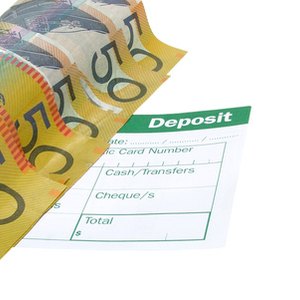
A certificate of deposit is a bank savings account with a specific fixed term (three months, two years, etc.) for a specific fixed interest rate. So, in theory, it should be easy to calculate the value of your deposit at any point in time. In reality, things are never simple when it comes to interest rates. You’ll need to figure out how the bank is compounding the interest and plug some numbers into a formula to get your current market value.
The Low-Down on CDs
A certificate of deposit is a time deposit, which means you’re locking the money away for a specific duration. Life spans, or terms, range from three months to five years or longer. You’ll get a guaranteed rate of interest, which tends to be higher than regular savings rates to reward you for your commitment.
You can usually cash out early if you need the money. But beware – you typically pay early withdrawal penalties if you pull your money out before the end of the term, which can wipe out some or all of the interest you’ve earned.
What Do We Mean By Fair Market Value?
The fair market value of a CD is simply what the product is worth at a designated point in time. For instance, you can find out what your CD will be worth when it matures. Or, you can work out how much you’d have in your pocket if you cashed out the CD today – after deducting those annoying withdrawal penalties, of course.
Either way, the valuation all comes down to the interest rate you’re being paid on the certificate. The rate is important, especially if you’re comparing one potential investment with another. If general savings rates go up from the locked-in rate you’re getting from your certificate, for example, then your CD is effectively losing money. If you've locked in at a higher rate, then your CD will be getting a better return.
How to Calculate the Fair Market Value
To figure out the fair market value, use the following formula for adding compound interest. This formula finds the annual percentage yield, or APY, which is the effective interest rate you’re being paid, reflecting compounding – not the note rate.
Market Value = P(1 + r/n)^nt
Here’s the information you’ll need:
- P = the deposit amount; the amount you invested in the CD
- r = the annual interest rate
- n = the number of times your interest compounds every year, for example, daily, monthly or yearly. If your interest compounds daily, for instance, this number will be 365. You’ll find this information in the CD paperwork or check with your bank.
- t = the term of the CD in years. If the term is, say, five years, but you want to know how much the CD will be worth after three years, use three years as your term.
If you’re a fan of math, plug your numbers into the formula to run the calculation. For an easier option, plug your variables into a CD interest calculator online. These free tools will do all the hard work for you.
Read more: How to Calculate the APR Compounding Daily
Just remember to deduct the withdrawal penalty if you’re calculating the value before the end of the CD term.
References
Writer Bio
Jayne Thompson earned an LLB in Law and Business Administration from the University of Birmingham and an LLM in International Law from the University of East London. She practiced in various “big law” firms before launching a career as a commercial writer specializing in finance and tech. Her work has appeared on numerous financial blogs including Wealth Soup and Synchrony. Find her at www.whiterosecopywriting.com.

